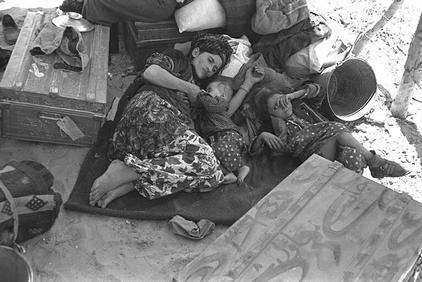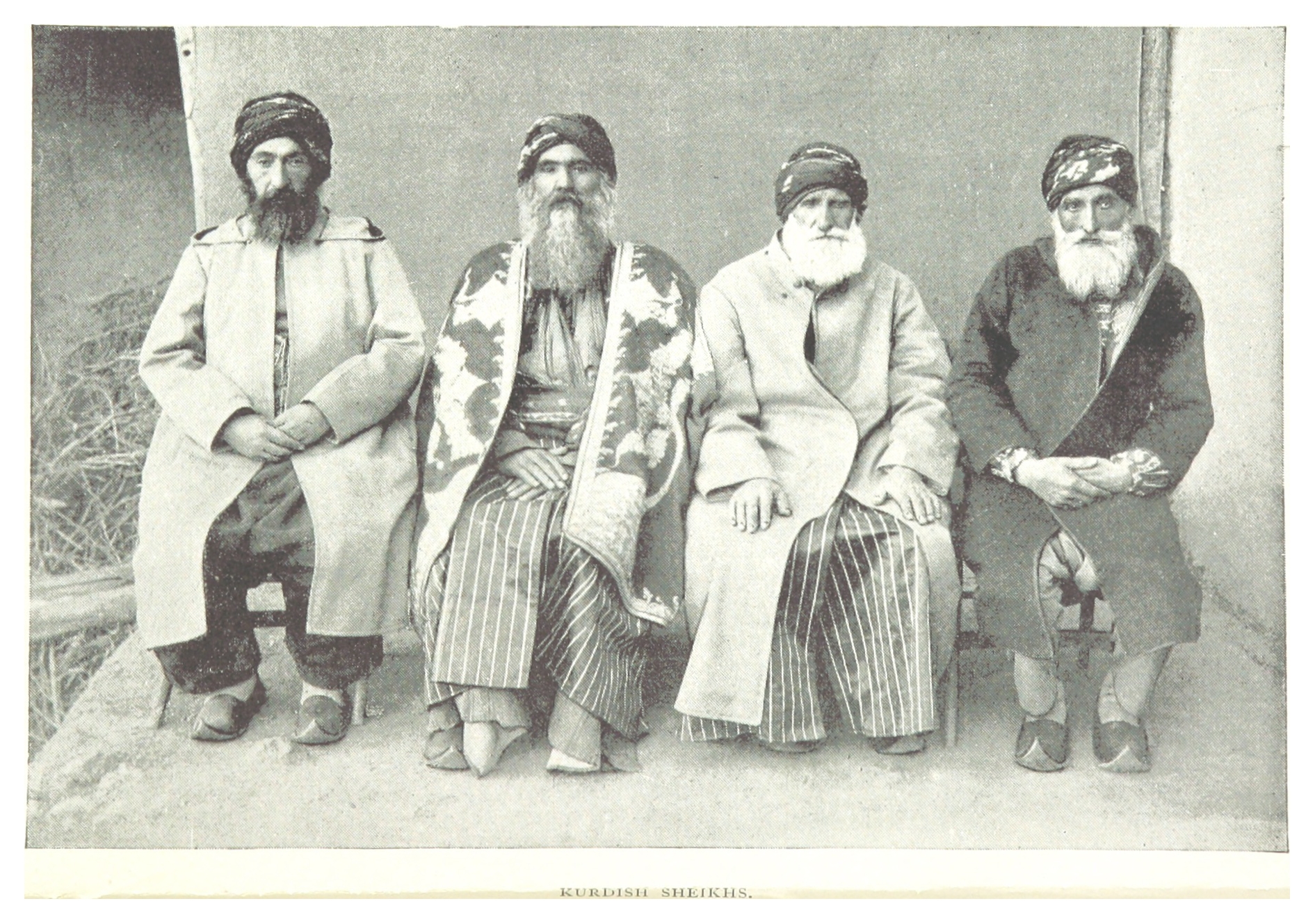|
List Of Jewish Sites In Iraq
According to a study, Jewish sites in Iraq include, over 250 synagogues, 48 Jewish schools, nine sanctuaries and five Jewish cemetery, cemeteries. Most of them were abandoned and left in ruins between 1941 and 1951 when Jews were persecuted. These sites were well protected during the regime of Saddam Hussein. However, the situation deteriorated, after the 2003 invasion of Iraq. Before the Jewish exodus, Iraq was home to one of the History of the Jews in Iraq, largest and oldest Jewish communities in the Middle East. Most of them lived in Baghdad, followed by Basra, Mosul, Kirkuk, Tikrit and other major cities. A Jewish community of Erbil, significant community of Kurdish Jews also existed in Erbil. After Israel and Palestine, Iraq is home to next number of Jewish sites in the world, along with Syria. History of some of these sites dates back to more than thousand years. Baghdad Baghdad had the highest concentration of the Iraqi Jewish population. Before the persecution, the ... [...More Info...] [...Related Items...] OR: [Wikipedia] [Google] [Baidu] |
Kurdish Jews
Kurdistani Jews are the Mizrahi Jewish communities from the geographic region of Kurdistan, roughly covering parts of northwestern Iran, northern Iraq, northeastern Syria and southeastern Turkey. Kurdish Jews lived as closed ethnic communities until they were expelled from Arab and Muslim states from the 1940s–1950s onward. The community largely spoke Judeo-Aramaic. As Kurdish Jews natively adhere to Judaism and originate from the Middle East, Mizrahi Hebrew is used for liturgy. Many Kurdish Jews, especially the ones who hail from Iraq, went through a Sephardic Jewish blending during the 18th century. In the present-day, the overwhelming majority of Kurdistan's Jewish population resides in the State of Israel, with the community's presence coming as a direct result of either the Jewish exodus from Muslim states or the making of Aliyah by those remaining in the following decades (see Kurdish Jews in Israel). Etymology The group historically preferred to be called "Kur ... [...More Info...] [...Related Items...] OR: [Wikipedia] [Google] [Baidu] |
Firdos Square
Al-Firdos Square () is a public open space in central Baghdad, Iraq. It is named after the Persian word ''Ferdows'', meaning 'paradise'. The site has been the location of several monumental artworks. Al-Firdos Square is located in the middle of al-Sa'doun Street and between Tahrir and Kahramana squares and in front of the 17th of Ramadan Mosque. The square is also located opposite the Abu Nawas Street which overlooks the Tigris River. Two of the best-known hotels in Baghdad, the Palestine Hotel and the Sheraton Ishtar, are located on the square. The square is infamous for the toppling of the statue of Saddam Hussein during the US-led invasion of Iraq in 2003. The image of the toppling was shown across the world and became a symbol of victory in Iraq. At the same time, became a symbol of American propaganda. The square is also the site of the killing of two journalists in the Palestine Hotel on the 8th of April. History The roundabout in the center of al-Firdos Square ha ... [...More Info...] [...Related Items...] OR: [Wikipedia] [Google] [Baidu] |
Avi Shlaim
Avi Shlaim (, ; born 31 October 1945) is an Israeli and British historian of Iraqi Jewish descent. He is one of Israel's " New Historians", a group of Israeli scholars who put forward critical interpretations of the history of Zionism and Israel. Biography Shlaim was born to wealthy Jewish parents in Baghdad in the Kingdom of Iraq. In the 1930s, the situation of the Jews in Iraq deteriorated, with the rise of nationalisms in Arab countries, and the concomitant growth of Jewish nationalism in the form of Zionism. Persecution of Jews was exacerbated after the defeat of the Arab armies in 1948, and Israel's independence. In 1951, during Operation Ezra and Nehemiah, Shlaim's family, along with most of Iraq's Jews, registered to emigrate to Israel and forfeit their Iraqi citizenship. The family lost all of their property and emigrated to Israel. Shlaim grew up in Ramat Gan. He left Israel for England at the age of 16 to study at a Jewish school. He returned to Israel in 1964 t ... [...More Info...] [...Related Items...] OR: [Wikipedia] [Google] [Baidu] |
1950–1951 Baghdad Bombings
The 1950–1951 Baghdad bombings were a series of bombings of Jewish targets in Baghdad, Iraq, between April 1950 and June 1951. Two activists in the Iraqi Zionist underground were found guilty by an Iraqi court for a number of the bombings, and were sentenced to death. Another was sentenced to life imprisonment and seventeen more were given long prison sentences.Morris & Black, 1992pages 91-92/ref> The allegations against Israeli agents had "wide consensus" amongst Iraqi Jews in Israel. Many of the Iraqi Jews in Israel who lived in poor conditions blamed their ills and misfortunes on the Israeli Zionist emissaries or Iraqi Zionist underground movement. The theory that "certain Jews" carried out the attacks "in order to focus the attention of the Israel Government on the plight of the Jews" was viewed as "more plausible than most" by the British Foreign Office. Telegrams between the Mossad agents in Baghdad and their superiors in Tel Aviv give the impression that neither group kn ... [...More Info...] [...Related Items...] OR: [Wikipedia] [Google] [Baidu] |
Imam Ali
Ali ibn Abi Talib (; ) was the fourth Rashidun caliph who ruled from until Assassination of Ali, his assassination in 661, as well as the first imamate in Shia doctrine, Shia Imam. He was the cousin and son-in-law of the Islamic prophet Muhammad. Born to Abu Talib ibn Abd al-Muttalib and Fatima bint Asad, Ali was raised by his elder cousin Muhammad and was Early Muslims, among the first to accept his teachings. Ali played a pivotal role in the early years of Islam when Muslims were severely persecuted in Mecca. After immigration () to Medina in 622, Muhammad gave his daughter Fatima to Ali in marriage and swore a pact of brotherhood with him. Ali served as Muhammad's secretary and deputy in this period, and was the flag bearer of his army. Numerous sayings of Muhammad praise Ali, the most controversial of which was uttered in 632 at the Ghadir Khumm, "Whoever I am his , this Ali is his ." The interpretation of the polysemous Arabic word is disputed: For Shia Islam, Shia Musl ... [...More Info...] [...Related Items...] OR: [Wikipedia] [Google] [Baidu] |
Sheykh Yitzhak Tomb & Synagogue
Sheikh ( , , , , ''shuyūkh'' ) is an honorific title in the Arabic language, literally meaning " elder". It commonly designates a tribal chief or a Muslim scholar. Though this title generally refers to men, there are also a small number of female sheikhs in history. The title ''Syeikha'' or ''Sheikha'' generally refers to women. In some countries, it is given as a surname to those of great knowledge in religious affairs, by a prestigious religious leader from a chain of Sufi scholars. The word is mentioned in the Qur'an in three places: verse 72 of Hud, 78 of Yusuf, and 23 of al-Qasas. A royal family member of the United Arab Emirates and some other Arab countries, also has this title, since the ruler of each emirate is also the sheikh of their tribe. Etymology and meaning The word in Arabic stems from a triliteral root connected with aging: , ''shīn-yā'-khā. The title carries the meaning leader, elder, or noble, especially in the Arabian Peninsula within the Tribes ... [...More Info...] [...Related Items...] OR: [Wikipedia] [Google] [Baidu] |
Jewish Exodus From The Muslim World
The Jewish exodus from the Muslim world occurred during the 20th century, when approximately 900,000 Jews migrated, fled, or were expelled from Muslim-majority countries throughout Africa and Asia, primarily as a consequence of the establishment of the State of Israel. Large-scale migrations were also organized, sponsored, and facilitated by Zionist organizations such as Mossad LeAliyah Bet, the Jewish Agency, and the Hebrew Immigrant Aid Society. The mass movement mainly transpired from 1948 to the early 1970s, with one final exodus of Iranian Jews occurring shortly after the Islamic Revolution in 1979–1980. An estimated 650,000 (72%) of these Jews resettled in Israel. A number of small-scale Jewish migrations began across the Middle East in the early 20th century, with the only substantial '' aliyot'' (Jewish immigrations to the Land of Israel) coming from Yemen and Syria. Few Jews from Muslim countries immigrated during the British Mandate for Palestine. Prior to Isr ... [...More Info...] [...Related Items...] OR: [Wikipedia] [Google] [Baidu] |
Jewish Architecture
Jewish architecture comprises the architecture of Jewish religious buildings and other buildings that either incorporate Jewish elements in their design or are used by Jewish communities. Terminology Due to the diasporic nature of Jewish history, there is no single architectural style that is common across all Jewish cultures. Examples of buildings considered Jewish architecture include explicitly religious buildings such as synagogues and mikvehs, as well as Jewish schools. See also * Synagogue architecture * List of Jewish architects * Jewish Architectural Heritage Foundation * Sacral architecture Sacral architecture (also known as sacred architecture or religious architecture) is a religion, religious architecture, architectural practice concerned with the design and construction of place of worship, places of worship or sacred or intenti ... References Architectural styles Jewish culture {{Judaism-stub ... [...More Info...] [...Related Items...] OR: [Wikipedia] [Google] [Baidu] |
Meir Taweig Synagogue
Meir Taweig Synagogue (), also known as Meir Tweg Synagogue or Me'ir Avraham Taweq Synagogue, is a large Orthodox Judaism, Orthodox Judaism, Jewish congregation and synagogue, located in the historic Jewish quarter of Bataween, in Baghdad, Iraq. The complex comprises the main synagogue, a Jewish school, library, and community center. Established in 1942, it was one of the important synagogues in the city. The synagogue was impacted during the persecution of the Jews in Iraq and was also damaged during frequent occasions of unrest and wars. It was restored in 1985 by Saddam Hussein. The synagogue was further expanded in 1988. After the 2003 invasion of Iraq, the synagogue was in fear of getting targeted in the attacks. Today, a small group of Jews, accompanied by Muslims looks after the synagogue. History Early history Meir Taweig Synagogue was built between 1942 and 1946. It is named after Meir Taweig, a Jewish businessman of Baghdad. During those times Iraq had a thriving ... [...More Info...] [...Related Items...] OR: [Wikipedia] [Google] [Baidu] |
Syria
Syria, officially the Syrian Arab Republic, is a country in West Asia located in the Eastern Mediterranean and the Levant. It borders the Mediterranean Sea to the west, Turkey to Syria–Turkey border, the north, Iraq to Iraq–Syria border, the east and southeast, Jordan to Jordan–Syria border, the south, and Israel and Lebanon to Lebanon–Syria border, the southwest. It is a republic under Syrian transitional government, a transitional government and comprises Governorates of Syria, 14 governorates. Damascus is the capital and largest city. With a population of 25 million across an area of , it is the List of countries and dependencies by population, 57th-most populous and List of countries and dependencies by area, 87th-largest country. The name "Syria" historically referred to a Syria (region), wider region. The modern state encompasses the sites of several ancient kingdoms and empires, including the Eblan civilization. Damascus was the seat of the Umayyad Caliphate and ... [...More Info...] [...Related Items...] OR: [Wikipedia] [Google] [Baidu] |





